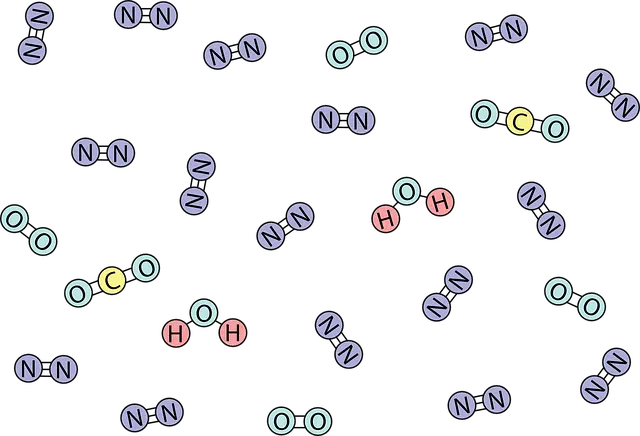
A molecule is made up of at least two atoms.
The molecule is the smallest particle that has all the physical and chemical properties of a substance , and is made up of two or more atoms . The atoms that make up the molecules can be the same (as occurs with the oxygen molecule, which has two oxygen atoms) or different (the water molecule, for example, has two hydrogen atoms and one oxygen atom).
molecular motion
Molecules are in constant motion , and this is known as molecular vibrations (which can be tension or bending). Its atoms are held together by sharing or exchanging electrons.
It should be noted that molecules can be neutral or have an electric charge . In the latter case, they are called ion-molecule or polyatomic ion .
Types of chemistry according to the molecules studied
Organic chemistry or carbon chemistry is a branch of chemistry that is responsible for analyzing those molecules that contain carbon and that form carbon-carbon or carbon-hydrogen covalent bonds, which are also called organic compounds.
Inorganic chemistry , on the other hand, is dedicated to the study of the formation , composition, structure and reactions of inorganic compounds and elements . There is also organometallic chemistry , which focuses on chemical compounds that have a bond between a carbon atom and a metal atom.
Biochemistry , for its part, is responsible for studying living beings at the molecular level. In this way, it analyzes the molecules that make up cells and tissues and that allow chemical reactions such as photosynthesis and digestion, among others.

In the atmosphere there are molecules of oxygen (02), nitrogen (N2), carbon dioxide (CO2) and other gases.
The complex fullerenes
At the beginning of 2013, a group of scientists from the Institute of Astrophysics of the Canary Islands found unprecedented evidence of molecules whose complexity exceeded what had been observed until then in the cosmos : complex fullerenes, also known by the peculiar name of "carbon onions." . This discovery has considerable repercussions on the fields of chemistry and physics of the Universe.
These are three-dimensional molecules that have great stability and resistance. Regarding their constitution , they are made up only of carbon atoms , mainly C60 and C70 ; In fullerenes that have atoms of the first type, hexagonal and pentagonal shapes are observed, while in the second, oval designs are seen, with a smoother and less angular surface.
Furthermore, the molecules found by these researchers are of considerable size and have various complex layers, with more types of carbon than those mentioned above, such as C240 and C540 . Another interesting fact that the research reveals, for which the astronomical observation process was necessarily combined with theoretical knowledge of physics, is that C60 fullerenes (the most common) have been found around two planetary nebulae of the Milky Way, which It may mean that these molecules with such characteristic shapes are more normal and more abundant than previously believed.
Regarding the name of the fullerenes, they derive from the surname of Richard Buckmister Fuller, who created the geodesic dome (part of a sphere made up of two-dimensional geometric figures). Its discovery dates back to the 1980s and was worthy of a Nobel Prize for the two professionals involved, but just after the first decade of this millennium, NASA discovered its presence in our galaxy, data that restored its validity, since its study can reveal fundamental information about the origin of our own existence .
Precisely, there is a theory that compares fullerenes to "cages" that transport other molecules and atoms, and it is believed that they were the ones who brought to planet Earth the substances that gave rise to life as we know it today.
